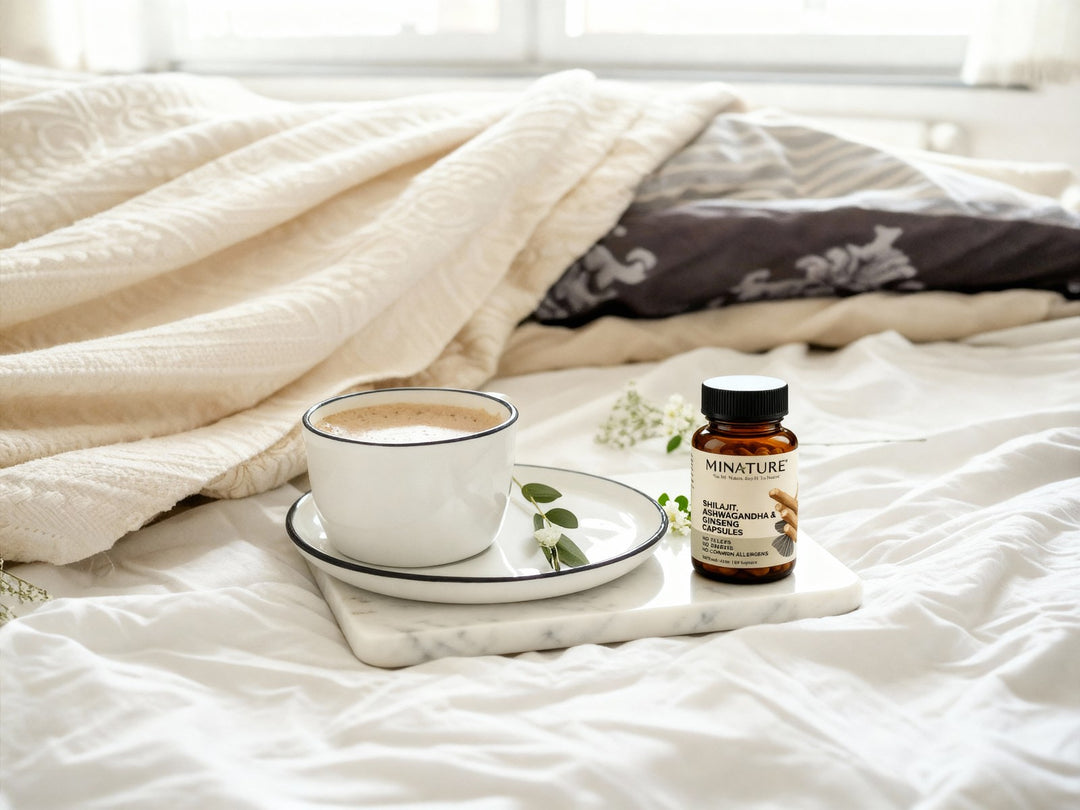Ashoka: A True Friend to Women’s Health

Ashoka is an evergreen, rain forest tree native to India's Deccan Plateau and the Western Ghats. Its Latin name is Saraca asoca, and it belongs to the Family Leguminosae.
Ashoka is also known by various names, such as: Hempushpa (golden looking flowers), Tamrapallava (red copper-coloured leaves), Vishoka, Sita-Ashoka, Ashok, Vedanasthapana ( as named by Acharya Charak for it's painkiller-like properties), etc.
The exact meaning of Ashoka is A-shoka i.e., “no grief,” and it is believed that the spiritual energy of this tree helps in alleviating pain. Hence, it is referred to as the "sorrowless tree."
Folklore and ancient history say, that Lord Buddha was born under an Ashoka tree. Mentions of Ashoka have also been made in the classic Indian epic, Ramayana. Ancient people used to put Ashoka leaves on their doors so that all the bad vibes get trapped outside their homes and are unable enter inside. In other words, Ashoka was used in a way that the modern days dream catchers are.
In Ayurveda, it is considered to be one of the divine herbs, or divya aushadhis, and is valued for both- its spiritual as well as physical health benefits.
Ashoka Herb - Medicinal Properties:
Taste - Astringent, Bitter (Kashaya, Tikta Rasa)Benefits of Each Part of the Ashoka Tree, With Their Nutritional Values:
Bark: The bark of this tree is rich in tannins, haematoxylin, flavonoids, steroids, saponins, catechol, glycosides, iron, calcium, ketosteroids, which help in following ways:
- Supports healing of uterine problems, painful menstruation, abnormal menstruation, hormonal imbalance, pelvic pain, and uterine spasms.Roots: Paste can be made out of roots, which is useful in treating conditions like skin inflammation, freckles, skin allergies, paralysis.
Leaves: Leaves contain tannins, carbohydrates, gallic acid, egallic acid, etc., which helps to heal breast cancer, burns, skin irritation and skin allergies.
Flowers: Flowers of this magic plant, are rich in saracasin, saracadin, proteins, waxy substances, and carbohydrates. Water mixed with crushed flowers prevents internal bleeding, dysentery, diarrhoea, syphilis, and also checks blood sugar levels.
Seeds: They contain various fatty acids like oleic acid, linoleic acid, palmitic and stearic acid, which reduce fever, pain, and swelling. Its powder is useful in treating kidney stones and asthma.
So, the beauty of this powerful herb can be summarized as follows-
- Powerful Uterine tonic.
- Natural detoxifier, diuretic.
- Extremely beneficial to the skin for treating acne, dark spots on the face, and in diseases like eczema, psoriasis, scabies, etc.
- Anti-Cancer drug (by inducing programmed cell death), mostly for skin cancer, breast cancer.
- Aids in the purification of blood.
- Reduces excessive cholesterol, making it a heart tonic.
- Anti-pyretic effects i.e. reduces fever.
- Prevents diabetic complications, like eye problems, ulcers, etc.
- Helps in treating digestive problems like dysentery, diarrhoea, etc.
- Relieves Piles (Haemorrhoids).
- Improves brain and respiratory functions.
- Improves sleep quality.
How to Use*:
- The decoction is made from 3 gm or a teaspoon full of bark powder mixed in 200 ml water, boiled up to 1/4th of it's quantity. When consumed, it is helpful in providing relief from painful menstruation, heavy menstrual bleeding, associated gynaecological issues, skin diseases, testicular swelling and other ailments, stated before.
- 1.5 gm of Ashoka’s Bark powder + 1.5 gm of Brahmi Powder consumed with a cup of warm milk or water helps in improving intellect.
- A thick decoction made from bark powder (consumed when cooled down) mixed with mustard oil when applied topically, treat boils and acne.
- Local application of Ashoka paste formed from powder relieves pain (joint pain) and inflammation.
- A paste made as above when mixed with honey and used as required, can heal wounds.
- 3 gm of bark powder + 1 cup of warm cow milk/water, when taken twice a day, can be used orally, or for washing genitals, which is helpful to get rid of white liquid discharge or leucorrhoea.
- Grinding dried Ashoka flowers with 20-30 ml of water, and consuming it twice a day helps lowering of blood sugar levels.
- 1⁄4 teaspoon of Ashoka Powder consumed with honey or water is effective in treating piles.
- 5 gm Ashoka seed powder + Cold-water when taken twice a day, prevents formation of kidney stones.
*Always consider asking your doctor's advice before taking any medication.
Shop for Organic Ashoka Powder at our website.
References:
Chakradutta Samhita chapter 58, Raj Nighantu, Bhavprakash Nighantu chapter 4, Charak Samhita.
Image courtesy:
Photography by: Mr. Antonino Visalli
Author: Dr Monika Mittal
Editor: Debleena Chatterjee.
All Rights Reserved| Rasayana Limited







